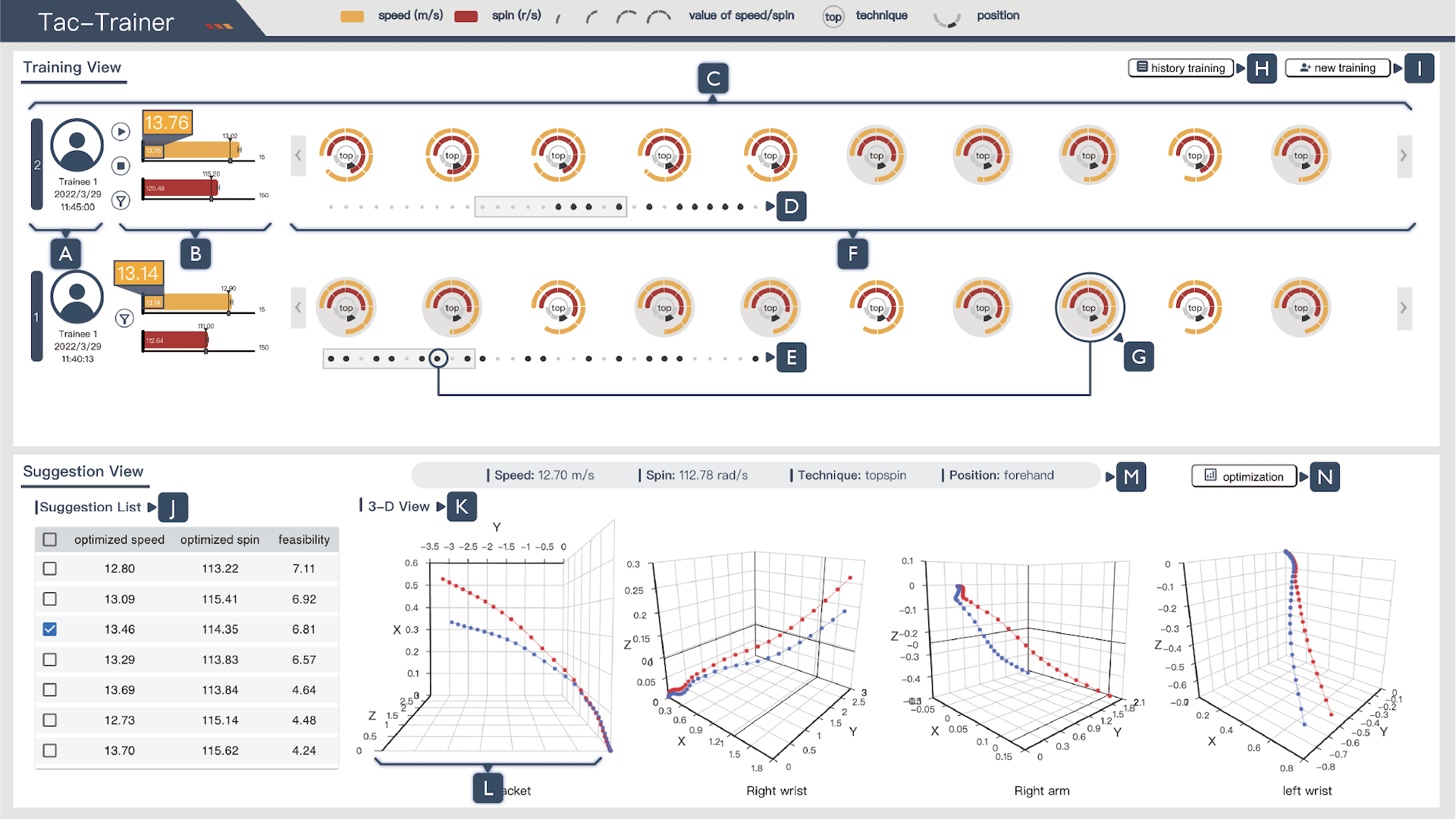Tac-Trainer: A Visual Analytics System for IoT-based Racket Sports Training
Jiachen Wang, Ji Ma, Kangping Hu, Zheng Zhou, Hui Zhang, Xiao Xie, Yingcai Wu
View presentation:2022-10-20T16:33:00ZGMT-0600Change your timezone on the schedule page
2022-10-20T16:33:00Z

Prerecorded Talk
The live footage of the talk, including the Q&A, can be viewed on the session page, Sports Vis.
Fast forward
Abstract
Conventional racket sports training highly relies on coaches' knowledge and experience, leading to biases in the guidance. To solve this problem, smart wearable devices based on Internet of Things technology (IoT) have been extensively investigated to support data-driven training. Considerable studies introduced methods to extract valuable information from the sensor data collected by IoT devices. However, the information cannot provide actionable insights for coaches due to the large data volume and high data dimensions. We proposed an IoT + VA framework, Tac-Trainer, to integrate the sensor data, the information, and coaches' knowledge to facilitate racket sports training. Tac-Trainer consists of four components: device configuration, data interpretation, training optimization, and result visualization. These components collect trainees' kinematic data through IoT devices, transform the data into attributes and indicators, generate training suggestions, and provide an interactive visualization interface for exploration, respectively. We further discuss new research opportunities and challenges inspired by our work from two perspectives, VA for IoT and IoT for VA.